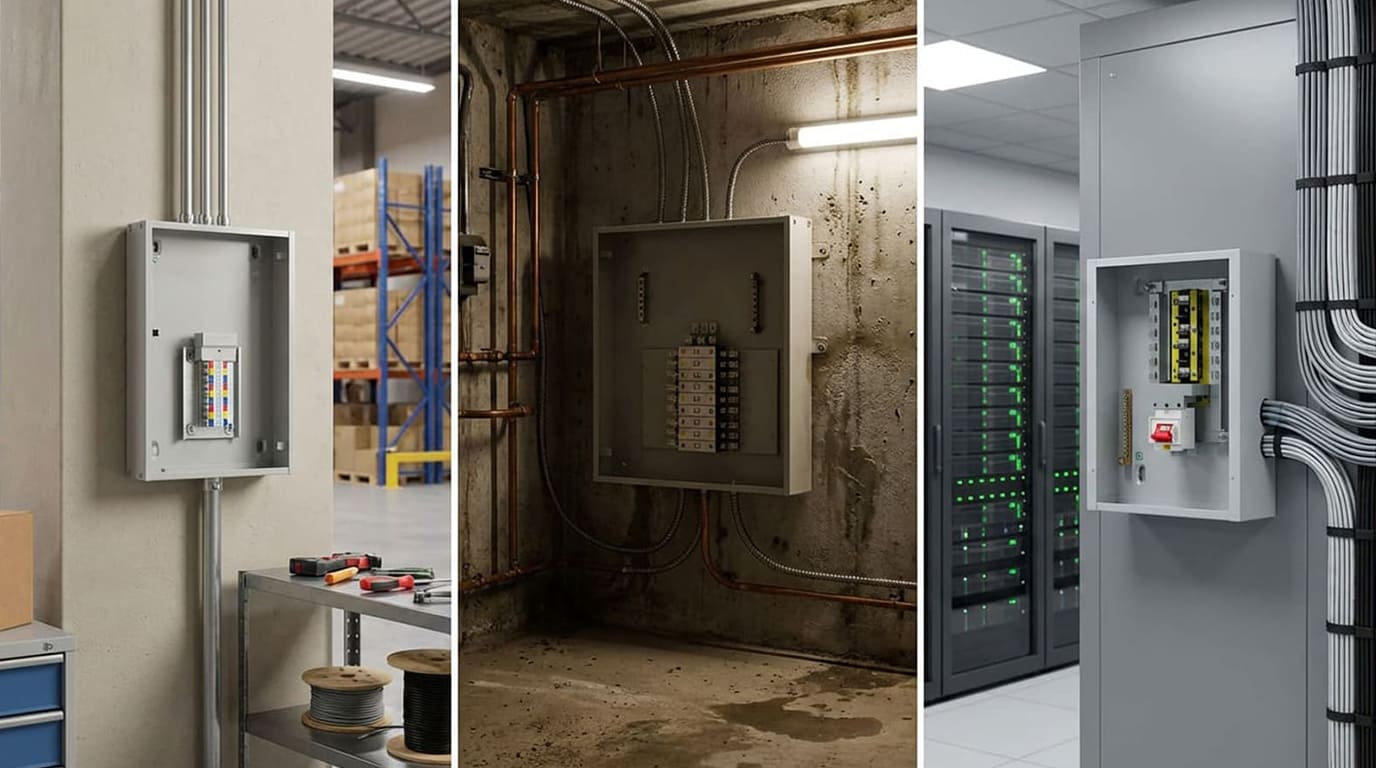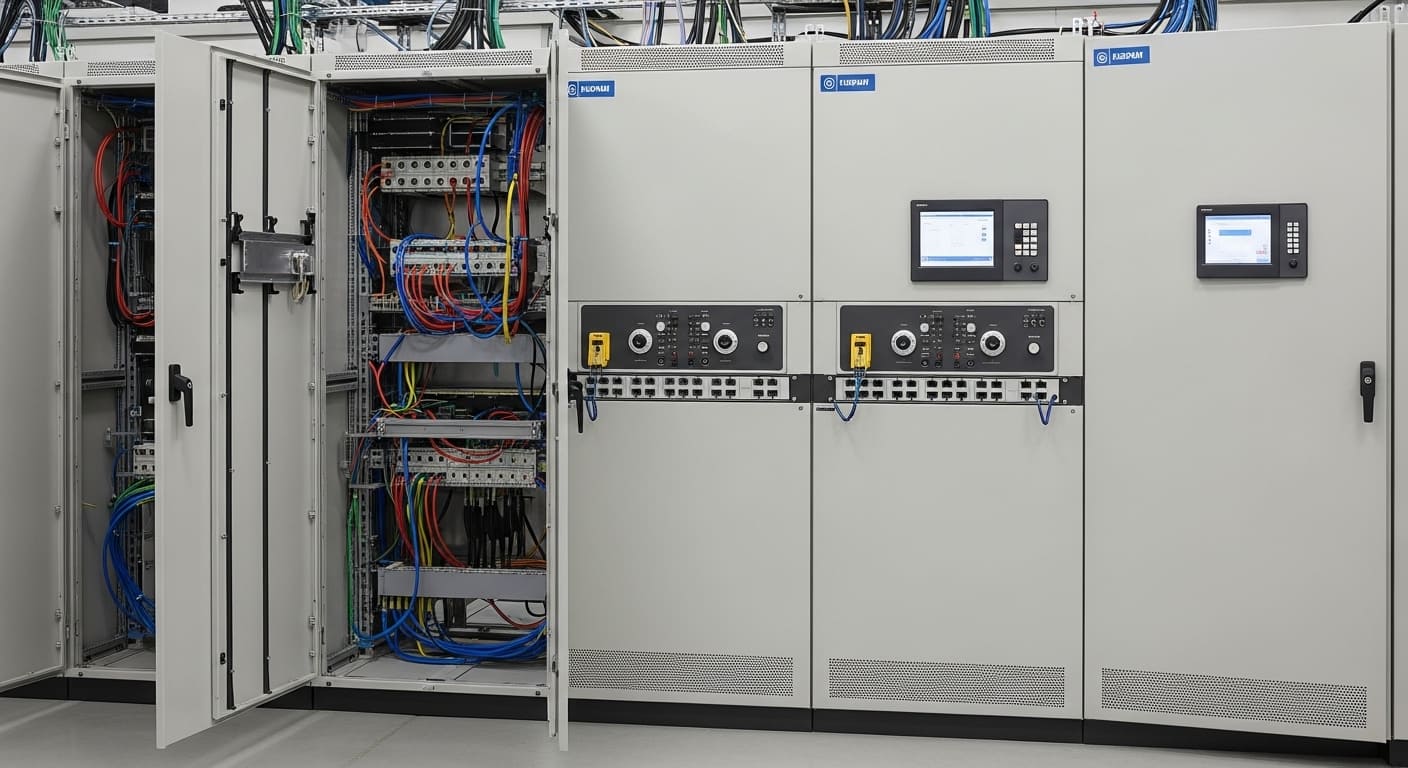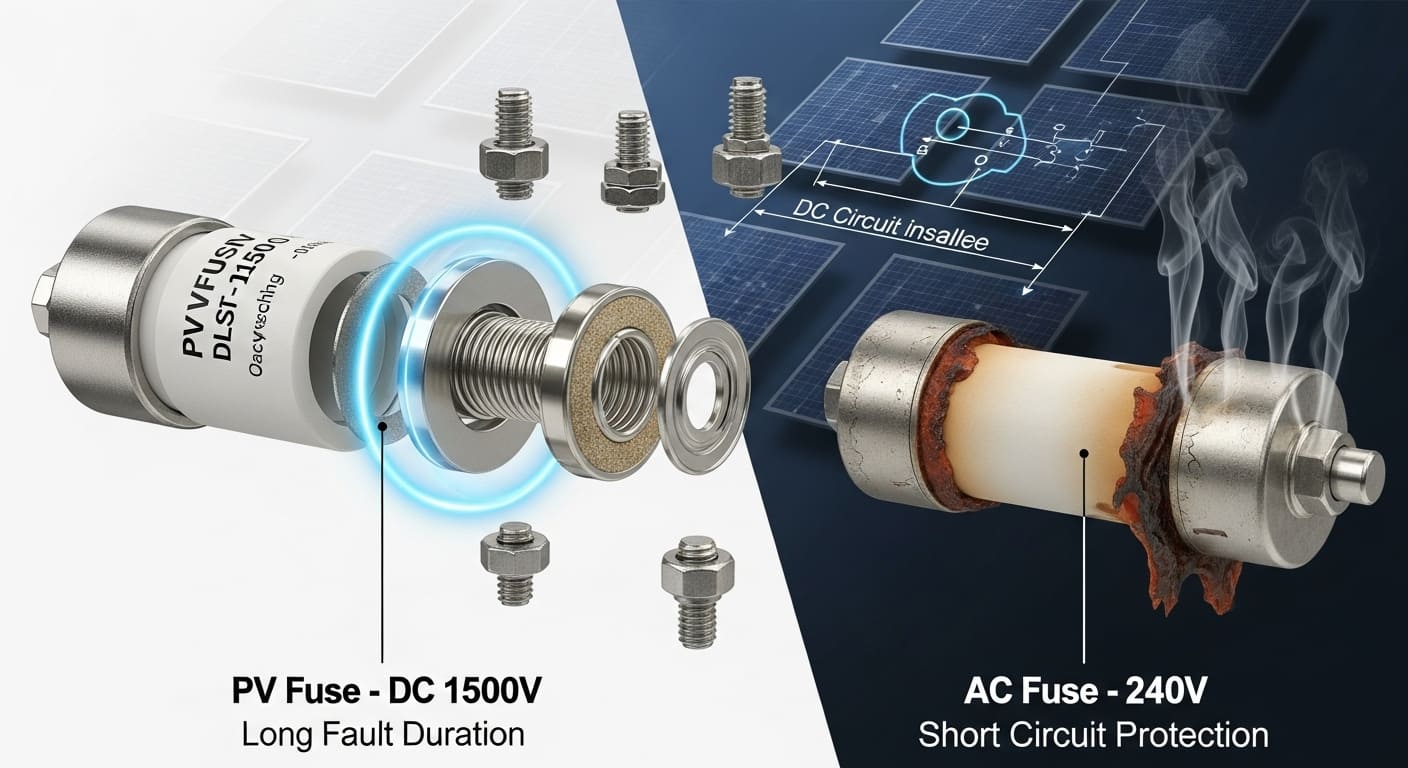Large commercial buildings and utility grids demand constant, safe power. System failures lead to huge disruptions and costs. Using inadequate components risks blackouts and safety hazards.
Reliable power in large systems is ensured by using durable, certified components like robust fuse protection and busbar systems, designed specifically for heavy loads, scalability, and long-term performance under demanding conditions.
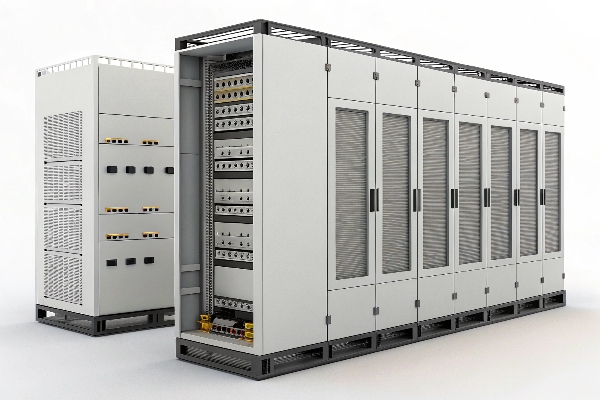
Keeping the lights on in large facilities or across city grids isn't magic; it relies on countless electrical components working perfectly together. The scale is massive, and the stakes are incredibly high. I remember consulting on a project for a large data center where undersized protection caused cascading failures during a peak load test – a stark reminder that cutting corners on core components is never worth it. Let's dive into how we ensure the backbone of these critical systems remains strong and dependable.
How Can Protection Systems Scale for Heavy Electrical Loads?
Need to protect circuits carrying massive amounts of power in utility substations or large commercial buildings? Standard protection might not cope. Scaling up safely requires specific component capabilities.
Protection scales for heavy loads using components with high current ratings and breaking capacities, like heavy-duty fuse switch disconnectors and large-ampacity busbar systems. Modular designs also allow easy expansion as power demands grow.
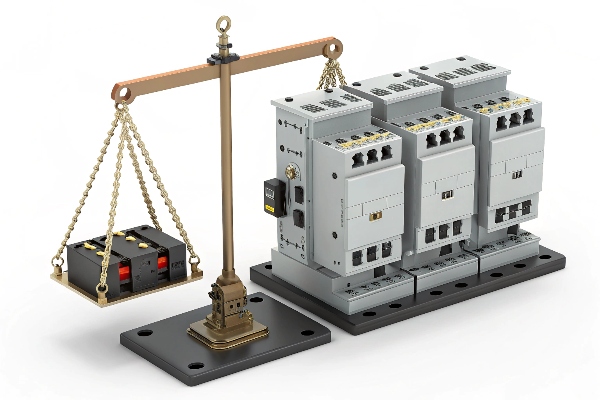
Commercial and utility power systems handle significantly more electrical energy than typical industrial setups. This means the components used must be specifically designed to manage these heavy loads safely and reliably. Scalability is key, both in terms of initial capacity and the ability to expand later.
Handling High Currents
The first requirement is the ability to continuously carry high currents without overheating. This depends on the conductor size, material (copper is preferred for conductivity), and the design of connection points within components like our NT/NH Fuse Bases or Vertical Fuse Switch Disconnectors. We use high-quality conductive materials and ensure robust terminal connections suitable for large cables or busbar interfaces.
Interrupting Major Faults
Equally important is the breaking capacity – the ability of a protective device (like a fuse) to safely interrupt extremely high currents during a short circuit. Utility systems, fed by powerful transformers, can produce enormous fault currents. Using components with inadequate breaking capacity can lead to catastrophic failure, equipment damage, and fire hazards. Our fuses and fuse switches are compliant with IEC standards, specifying high breaking capacities suitable for these demanding applications.
Modular Scalability
Power needs often grow over time. A truly scalable system uses modular components. For instance, our Busbar Distribution Blocks and Pan Assemblies allow additional circuits and protective devices to be added easily without completely re-engineering the main power distribution path. This modularity supports phased project builds, common for EPC contractors like Mr. Abdu, and simplifies future upgrades.
| Feature Needed | Why it Matters for Heavy Loads | How Fuspan Components Address It |
|---|---|---|
| High Current Rating | Prevents overheating under normal load | Robust conductors, quality materials, secure terms |
| High Breaking Capacity1 | Safely interrupts large fault currents | Fuses meet IEC 60269 requirements |
| Thermal Management2 | Dissipates heat effectively | Design considers airflow, material conductivity |
| Modular Design3 | Allows easy system expansion | Busbar systems, Pan Assemblies, Vertical Switches |
| Durability | Ensures long service life under load | Quality construction, 100% testing |
Ensuring protection scales correctly involves choosing components rated for the maximum potential load and fault level, and designing the system with future growth in mind using modular approaches.
How Does Component Durability Ensure Long-Term Reliability?
Utility and commercial power systems must operate reliably for decades. Component failures cause costly outages and repairs. How can you be sure the parts you install today will last?
Component durability ensures long-term reliability through robust construction, high-quality materials resistant to aging and stress, and rigorous testing. This minimizes failures, reduces maintenance needs, and guarantees consistent performance over the system's lifespan.
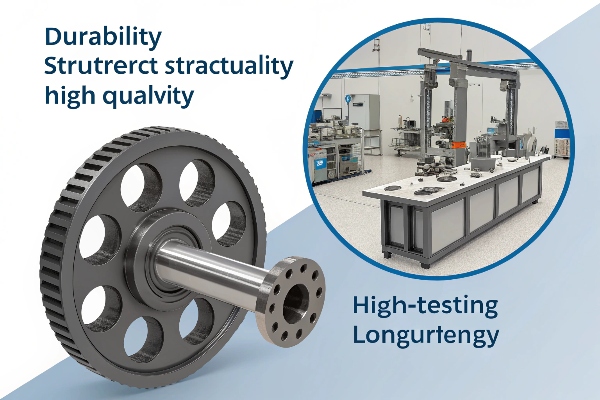
Reliability in large power systems isn't just about initial performance; it's about sustained performance over many years, often in challenging conditions. Component durability is the foundation of this long-term reliability. A weak link can compromise the entire system.
Material Quality and Construction
Durability starts with the materials used. For instance, the insulating bodies of our fuse holders and switch disconnectors use high-grade, track-resistant thermoset or thermoplastic materials4 that withstand electrical stress and environmental factors without degrading quickly. Metal parts, like contacts and terminals, use appropriately plated copper or alloys to ensure good conductivity and resist corrosion over time. Robust mechanical design prevents physical damage during installation or operation.
Resistance to Operating Stresses
Components in utility systems face constant electrical and thermal stress. Durability means designing parts to handle continuous current flow, associated heat generation, and occasional overloads or surges without premature failure. This includes ensuring secure connections that don't loosen due to thermal cycling or vibration.
The Importance of Testing
You can't just assume durability; you have to verify it. Our commitment to quality includes manufacturing under an ISO 9001 system5 and, critically, performing 100% factory testing on key parameters for our products before shipment. This final check confirms each unit meets specifications and helps catch any potential manufacturing defects that could impact long-term performance. For procurement managers like Mr. Abdu, this rigorous testing provides confidence in product consistency for large project deployments.
| Durability Factor | Impact on Reliability | Fuspan's Approach |
|---|---|---|
| Material Selection | Resists aging, corrosion, stress | High-quality insulators & conductors |
| Robust Construction | Withstands mechanical handling/stress | Strong housings, secure assembly |
| Thermal Endurance | Handles heat from continuous load | Designs optimize heat dissipation |
| Electrical Strength | Prevents insulation breakdown | Meets IEC dielectric requirements |
| Consistent Quality | Ensures every unit performs well | ISO 9001 system, 100% factory testing6 |
Investing in durable components from a trusted manufacturer might seem slightly more expensive upfront, but it pays off significantly through reduced failures, lower maintenance costs, and uninterrupted service over the decades-long lifespan expected in commercial and utility installations.
What Certifications Matter for Utility-Scale Projects?
Planning a major power distribution project for a utility or large commercial facility? Using uncertified components is a huge risk. Which certifications provide the necessary assurance of safety and performance?
For utility-scale projects, IEC certifications (like IEC 60947 for switchgear, IEC 60269 for fuses) are critical. They demonstrate compliance with international standards for safety, performance ratings, and construction, ensuring suitability for demanding applications.

In large-scale utility and commercial power projects, compliance with recognized standards is not optional – it's essential for safety, reliability, and regulatory approval. International Electrotechnical Commission (IEC) standards are globally accepted benchmarks for low-voltage electrical equipment.
Key IEC Standards
Several IEC standards are particularly relevant for the components used in these heavy-duty systems:
- IEC 60947 series7: Covers low-voltage switchgear and controlgear. This includes standards for devices like switch disconnectors, fuse combination units (like our Vertical Fuse Switch Disconnectors), and circuit breakers. It specifies requirements for performance, safety, construction, and testing.
- IEC 60269 series8: Deals specifically with low-voltage fuses. It defines performance characteristics, time-current curves, breaking capacity ratings, and dimensions for different fuse types (like NH/NT fuses used in our holders).
- IEC 61439 series9: Applies to low-voltage switchgear and controlgear assemblies (the complete electrical panel). While we supply components, understanding this standard helps ensure our parts integrate correctly into compliant final assemblies.
Why Certification is Crucial
For EPC contractors and utility engineers, specifying IEC-certified components provides:
- Verified Safety & Performance: Confirmation that the product meets rigorous, internationally agreed-upon safety and performance criteria (e.g., voltage rating, current rating, short-circuit withstand).
- Simplified Compliance: Using certified components helps ensure the final installation meets project specifications and national electrical codes, which often reference IEC standards.
- Documentation Assurance: Certified products typically come with the necessary technical documentation (datasheets, test reports) required by project managers like Mr. Abdu to prove compliance. Fuspan ensures this documentation is readily available.
- Interoperability: Standardized dimensions and characteristics (within limits) allow for better integration with other certified equipment.
| Certification Aspect | Importance for Utility/Commercial Projects | Fuspan's Commitment |
|---|---|---|
| Safety Standards | Ensures protection against electrical hazards | Design & testing according to IEC safety |
| Performance Ratings | Guarantees operation under specified load/fault conditions | Products meet relevant IEC ratings |
| Construction Quality | Specifies material and build requirements | Use of compliant materials, robust design |
| Documentation | Provides proof of compliance for project approval | Full technical package provided |
| Global Recognition | Facilitates international projects and acceptance | Focus on IEC for export markets |
Relying on certifications like IEC is fundamental risk management in large projects. It provides objective evidence that the components selected are fit for purpose and meet the high demands of utility and commercial power distribution.
Can Modular Systems Simplify Maintenance in Large Installations?
Facing complex maintenance procedures in sprawling commercial or utility power systems? Traditional, custom-wired panels can be difficult and time-consuming to service. Can modular designs make maintenance easier and safer?
Yes, modular systems greatly simplify maintenance in large installations. Standardized components like busbar systems and plug-in units allow for faster troubleshooting, easier component replacement, and safer isolation procedures, minimizing downtime.
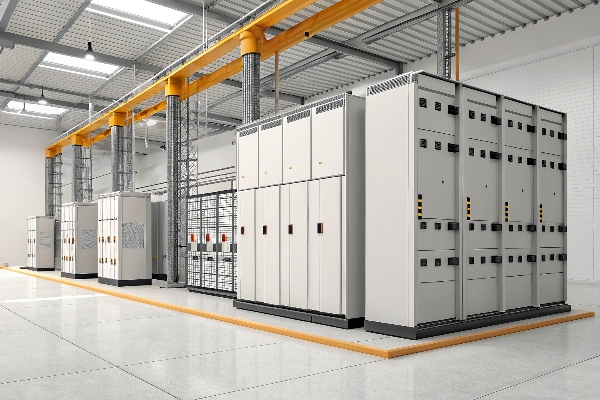
Maintaining large-scale power distribution systems efficiently and safely is a significant operational challenge. Downtime can be extremely costly, and working on complex, high-energy panels carries inherent risks. Modular system design offers substantial advantages over traditional, point-to-point wired assemblies when it comes to maintenance.
Faster Troubleshooting and Replacement
Modular systems often use standardized connection methods and components. For example, protective devices might plug directly onto a busbar system10 using adapters, or pre-fabricated pan assemblies provide fixed locations for circuit breakers. This makes identifying and isolating a faulty component much quicker. Replacement often involves simply unplugging the old unit and plugging in a new one, drastically reducing repair time compared to disconnecting and reconnecting multiple individual cables. Our vertical fuse switch disconnectors, when used with busbar adapters, exemplify this ease of replacement.
Enhanced Safety during Maintenance
Modularity can improve safety. Clearly defined functional units make it easier to isolate specific sections for work. Components like fuse switch disconnectors11 provide visible breaks for lockout/tagout procedures. Furthermore, the reduced wiring complexity in modular panels leads to less clutter, making access easier and reducing the risk of accidental contact with live parts.
Simplified Modifications and Upgrades
Large installations often evolve. Modular designs make it easier to add new circuits or upgrade existing components. Adding a new feeder circuit might simply involve adding another protective device onto an existing busbar system, rather than extensive rewiring of the main distribution.
| Maintenance Aspect | Traditional Wiring | Modular System (e.g., Fuspan Busbars/Pans) | Benefit of Modularity |
|---|---|---|---|
| Troubleshooting | Complex tracing of wires | Easier identification of faulty unit | Faster fault finding |
| Replacement | Disconnect multiple wires, remove unit | Unplug/unbolt unit, replace quickly | Significantly reduced downtime (MTTR) |
| Safety Isolation | Can be complex to ensure isolation | Clearer functional units, visible breaks | Safer working procedures |
| Accessibility | Often cluttered, difficult access | Cleaner layout, better access | Easier and safer inspections/work |
| Modifications | Requires significant rewiring | Easier to add/change standardized units | More flexible for future needs |
For facility managers and EPC contractors focused on the entire lifecycle cost and operational efficiency of a power system, the maintenance advantages of modularity are compelling. It translates directly to increased uptime and safer working conditions in large commercial and utility installations.
Conclusion
Ensuring reliable commercial and utility power relies on durable, certified, and scalable components. Modular systems using robust fuse protection and busbars simplify installation, enhance safety, and streamline long-term maintenance.
-
Understanding high breaking capacity is crucial for ensuring safety in electrical systems. Explore this link to learn more about its importance. ↩
-
Effective thermal management is vital for preventing overheating. Learn about its principles and applications in electrical systems. ↩
-
Modular design allows for easy upgrades and scalability in electrical systems. Discover how it can benefit your projects. ↩
-
Explore this link to understand the benefits and applications of these advanced materials in enhancing electrical component durability. ↩
-
Learn about the ISO 9001 system to see how it ensures quality and consistency in manufacturing processes, crucial for reliable products. ↩
-
Discover the significance of 100% factory testing in ensuring product reliability and performance before shipment, vital for procurement managers. ↩
-
Explore this link to understand the IEC 60947 series, which is crucial for ensuring safety and performance in low-voltage systems. ↩
-
Learn about the IEC 60269 series to grasp its importance in defining performance characteristics for low-voltage fuses. ↩
-
Discover the IEC 61439 series to see how it ensures proper integration of components in electrical panels. ↩
-
Discover the functionality of busbar systems and their advantages in modular electrical setups for efficient maintenance. ↩
-
Learn about the role of fuse switch disconnectors in ensuring safety during maintenance, especially in modular systems. ↩


